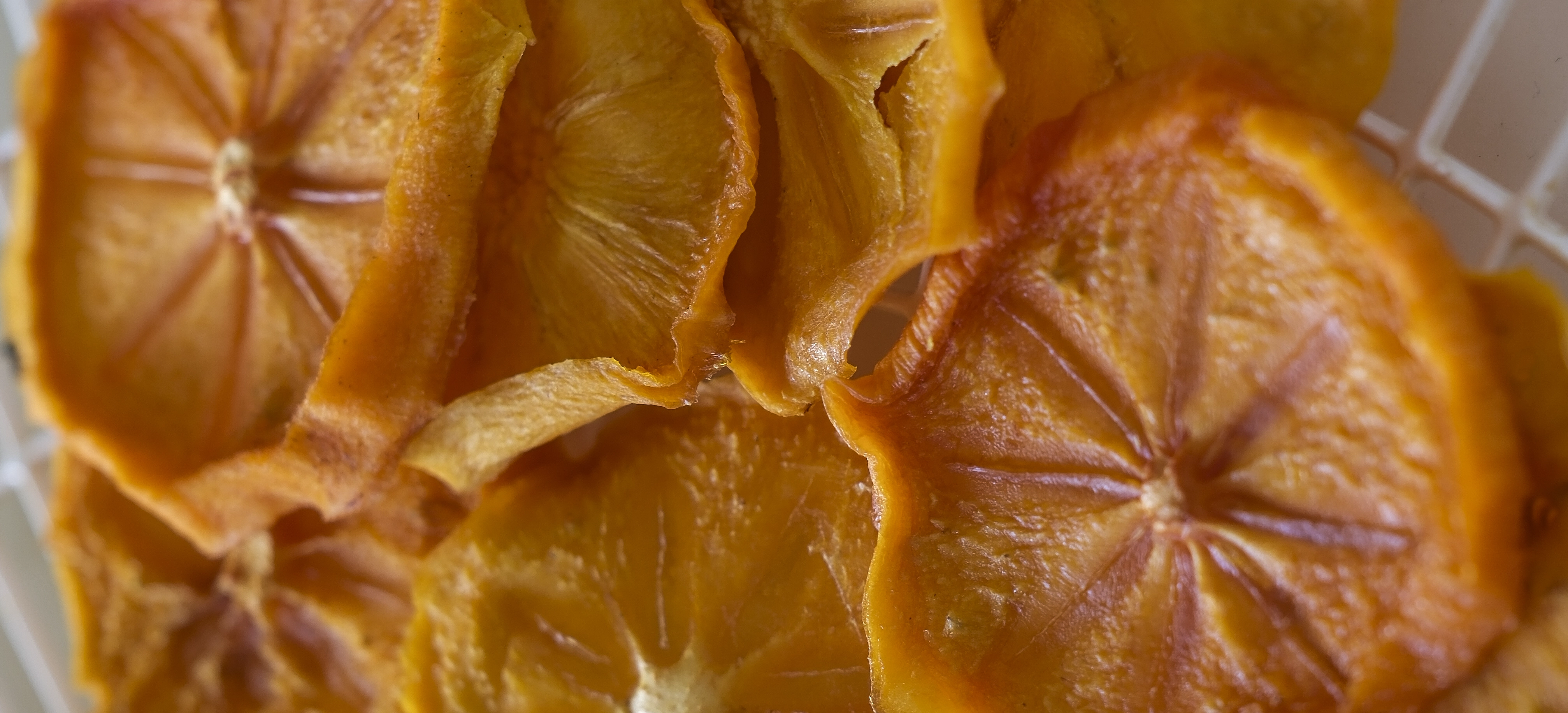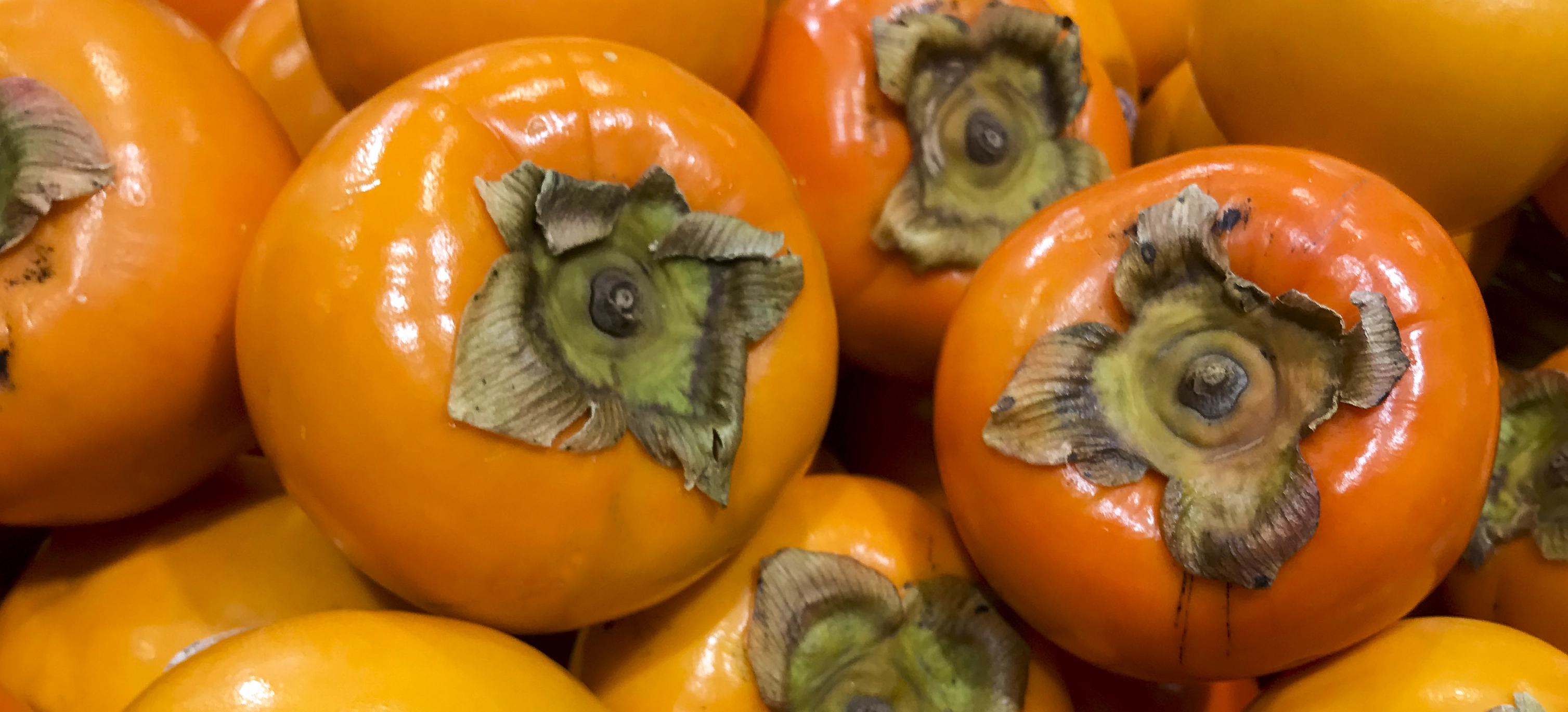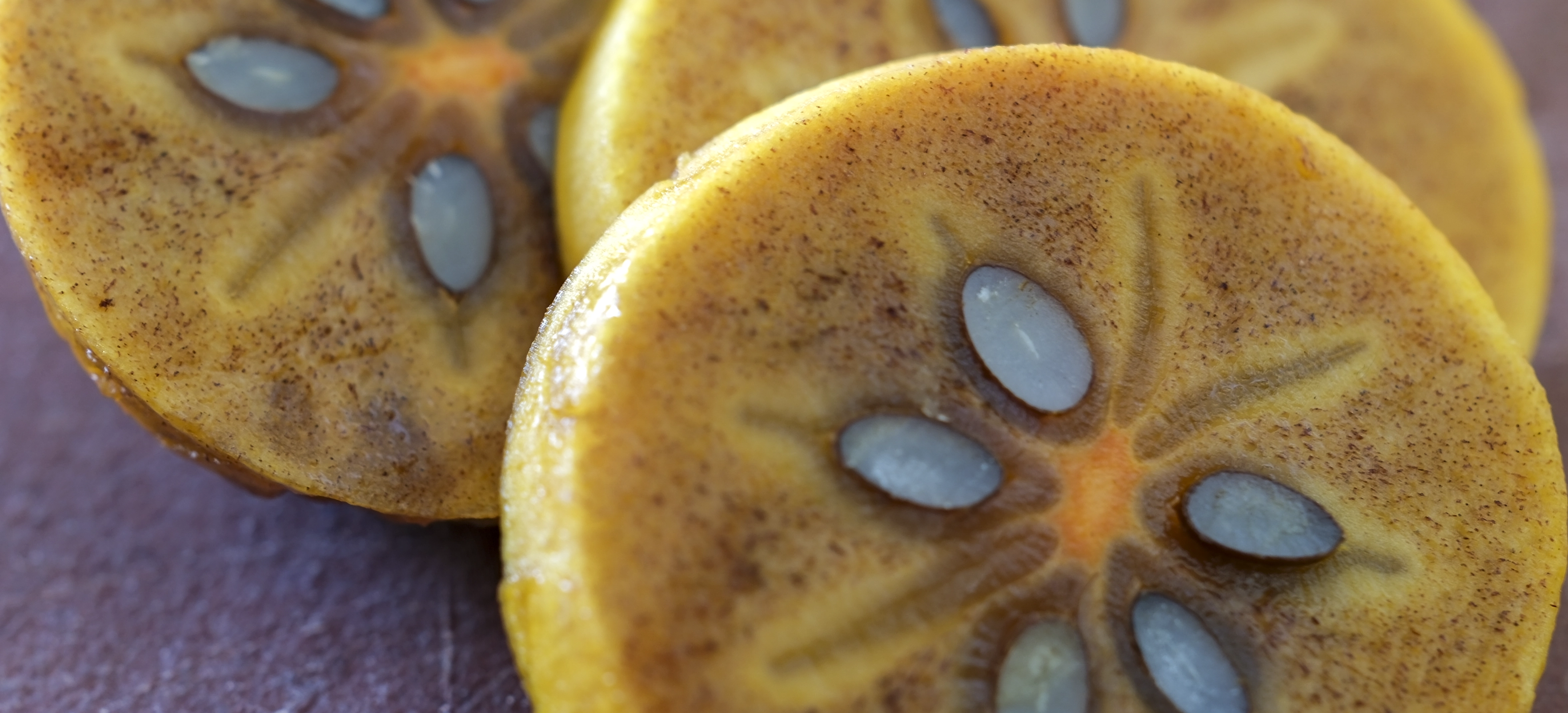Dried Persimmon
- Drying, Salting & Potting

There are two types of persimmons. The original or astringent (Hachiya) and the sweet or non-astringent (Fuyu) variety. To dry persimmons, use the non-astringent ones. When ripe they have a firm crisp texture and a slightly sweet refreshing flavour. Easy to prepare, slice and dehydrate, they make a healthy dried fruit snack and are a wonderfully colourful addition to your cheese plate or as a celebratory decoration on your favourite cakes or desserts.
The Hachiya variety, which is heart shaped, are best eaten fresh but must be left to ripen fully to a soft mushy texture. Remove the calyx and then dive right in with a spoon. It will be like eating fresh fruit pudding! If it’s not fully ripe, it has a very astringent flavour, from its high tannin levels, which causes the mouth to pucker. The Fuyu, grown commercially and generally available in shops, varies in colour from pale to deep orange and looks slightly flattened.
Next time a neighbour offers some persimmons or you see them on the shelves, have a go and try this exotic fruit that originated in China.
- Preparation Time:
- 30 minutes
- Drying Time:
- 4 hours
INGREDIENTS
- 10
- Persimmons, ripe

METHOD
To prepare the persimmons rinse and dry to remove any garden or store debris before removing the calyx and peeling. Insert a sharp paring knife at a 45-degree angle and using a circular motions work around the calyx and lift out. Then using a vegetable peeler, remove the peel and discard. Lay the fruit on its side, on a chopping board, and cut into 3-4 mm slices. The round slices will have an attractive star pattern formed from the immature seeds.
If the there is a hard seeded core, after peeling the persimmon, place the bottom of the fruit on a chopping board and slice through the fruit from top to bottom on either side of the core. Then slice the halves into 3-4mm slices. Discard the core.
Place the sliced persimmon, in a single layer without overlapping onto the dehydrator tray. As each tray is loaded, place on the dehydrator, cover with the lid and commence drying. Repeat and use multiple trays as required.
Cook at 58-60 degrees C, or at the recommended temperature specified by your dehydrator brand, for approximately 4 hours or until the slices are dried and are not sticky to touch.
Allow to cool before storing in paper bags and/or an airtight container. They will go mouldy if they are stored in a plastic bag.
Label with the name of the product and date dried and store in a cool, dry, and dark place.
NOTES
- Chocolate persimmons (non-astringent variety were given to me for this recipe. The name is a little misleading as they don't taste of chocolate, rather they ripen to a rich chocolate brown colour.
- Use only the best quality produce at the peak of ripeness and flavour. Remove any bruised or damaged sections but do not use mouldy fruit.
- No pre-treatment is required when drying the persimmons as they do not oxidise - go brown when cut and exposed to the air.
- It is recommended that fruit is dried at 58-60 degrees C to minimise the loss of heat-sensitive vitamin A and C and to retain colour.
- Drying times can vary and will be influenced by the age, type and efficiency of your dehydrator, fruit moisture content, the thickness and evenness of the sliced fruit and climatic conditions such as temperature and humidity.
- Check the slices every hour or so and turn over to ensure even drying. Remove any slices that are dried and rearrange the trays as required.
- Labelling.
- Other items that can be recorded on your label include dried weight, drying time and temperature, length of storage time before use, i.e., your own Best Before date, plus any other information you think is important. I have different varieties of apples, citrus and peaches so I like to note the fruit type such as Granny Smith or Pink Lady Dried Apples.
- Correct labelling assists in rotating products as the pantry starts to fill from your preserving adventures.
- Place the latest products to the back of your storage so that the oldest preserved products are always used first.
- Packaging.
- Package the dried persimmons as soon as it is cool so that it does not commence absorbing moisture. Exposure to moisture at this stage or from incorrect packaging can lead to a loss of quality and the development of mould during storage.
- Home vacuum packaging is an excellent way to keep your products dry and preserve their flavour and colour. Vacuum packaging will extend the shelf life by 3-4 times.
- Bag sealers are useful but note that they do not remove the air within the package and will not produce the same result.
- Storing
- Do not store fruits and vegetables in the same storage container as there may be a transference of flavour and moisture.
- The darker and cooler the storage area the longer dried foods will last in peak condition. For every 10 degrees C lower the storage area is, shelf life is increased 3-4 times.
 Ripe chocolate persimmon with developed seeds which creates a hard core
Ripe chocolate persimmon with developed seeds which creates a hard core
